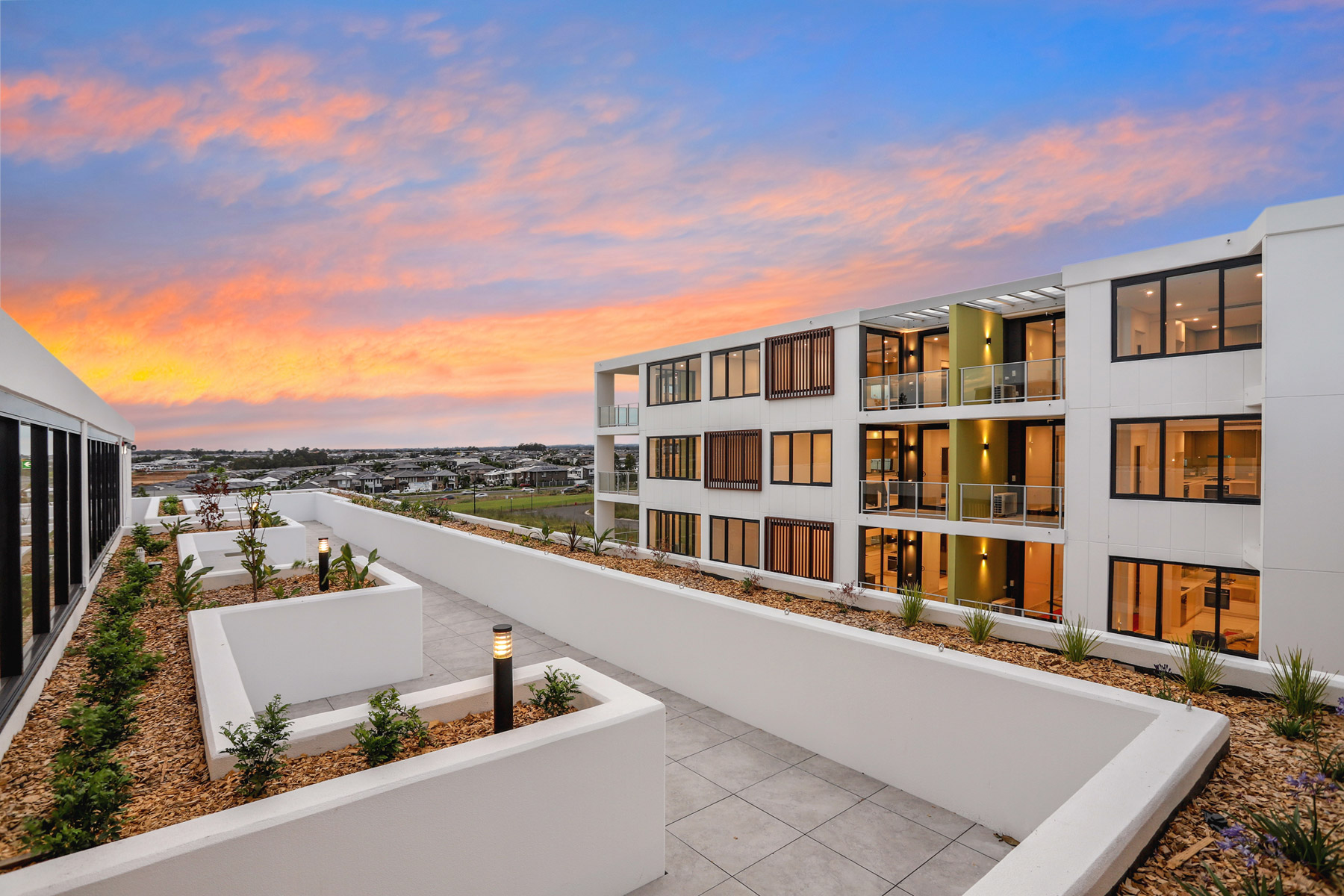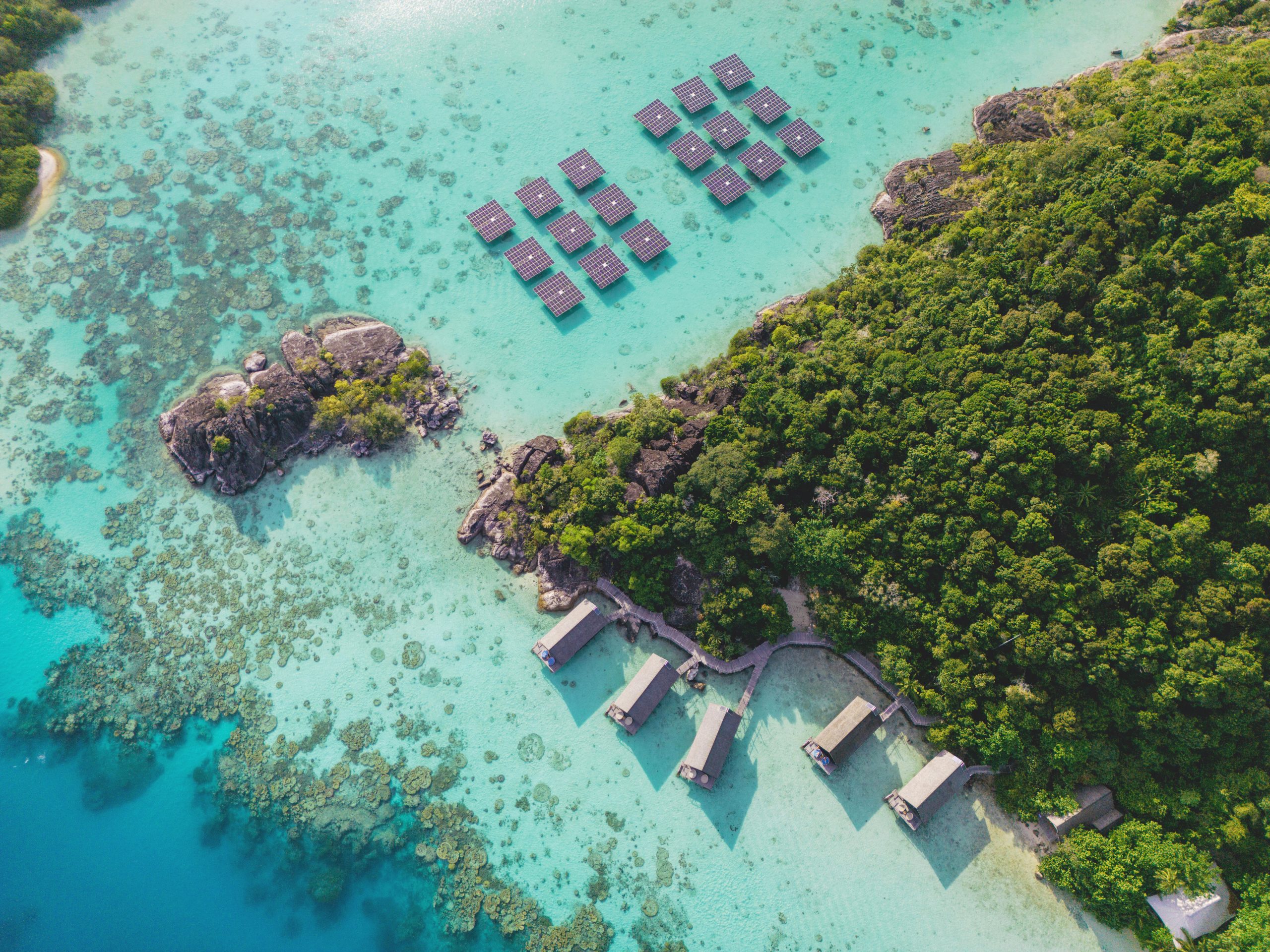Bold by Design at Cape Schanck
A visionary statement by architectural firm Denton Corker Marshall, the award-winning Emery Residence is the ultimate juxtaposition of contemporary design surrounded by a raw rural landscape.
Just listed with Kay & Burton Flinders agents Sasha Romensky and Tom Barr Smith, the unique coastal retreat at the southernmost tip of the Mornington Peninsula has a price guide of between $5.5 million and $6 million.
Winner of the prestigious Robin Boyd Award in 2000, this bold architectural landmark was created for prominent graphic designer Garry Emery, founder of Melbourne-based EmeryStudio, which shut in 2016.
Unsurprisingly, the Peninsula weekender of a prominent creative mind cuts a striking asymmetrical figure within its soft bush setting inside the gated National Estate surrounded by the Cape Schanck Golf Course.
Crafted from concrete, glass, and stainless steel, the designer home starkly contrasts its natural environment and the rolling fairways of the golfing green.
Known for their highly contemporary creations, Denton Corker Marshall have been behind an eclectic collection of commercial projects including the Stonehenge Exhibition and Visitor Centre in the UK, the Australian Pavilion in Venice as well as the Anzac Hall and Australian War Memorial in Canberra.
The four-bedroom two-storey house is essentially two rectangular boxes, one perched atop the other, with the upper level rising above the tree tops.
As essentially one free-flowing space, the upper floor hosts the combined living and dining room with a suspended steel hearth wood-burning fireplace.
At its heart, a sleek modern kitchen features a long freestanding island bench, stainless steel surfaces and hidden appliances behind contrasting warm timber cabinetry to promote a sense of minimalism.
The main bedroom on the same level has an ensuite, a walk-in wardrobe plus an elevated centre stage position overlooking the land and out to the ocean.
Downstairs, via a glass-encased, polished concrete staircase, two more bedrooms feature strategically placed angled windows capturing water views.
These rooms with built-ins share a full bathroom and laundry while a separate self-contained studio space with a bathroom and kitchenette, built-in cabinetry, workstations, and a communal meeting area, making it an inspired home office or a guest suite.
Enveloped by more than 4000sq m of lush landscape, the property’s low maintenance grounds feature established native trees and low lying shrubs allowing for the panoramic ocean and gold course views.
Fingal and Gunnamatta beaches are close by, and the 100km Mornington Peninsula Walk or the shorter Two Bays Walking Track or Coastal Walk, offer locals an alternative way to witness the wild ocean coastline and Cape Schanck Lighthouse.
The house is about 72km from Melbourne’s CBD and about 15kms from the townships of St Andrews Beach and Flinders.
Emery Residence at Cape Schanck is listed with a price guide of $5.5 million to $6 million through Kay & Burton Flinders agents Sasha Romensky and Tom Barr Smith.
Records keep falling in 2025 as harbourfront, beachfront and blue-chip estates crowd the top of the market.
A divide has opened in the tech job market between those with artificial-intelligence skills and everyone else.
The 2026 McGrath Report warns that without urgent reforms to planning, infrastructure and construction, housing affordability will continue to slip beyond reach for most Australians.
Australia’s housing market has reached a critical juncture, with home ownership and rental affordability deteriorating to their worst levels in decades, according to the McGrath Report 2026.
The annual analysis from real estate entrepreneur John McGrath paints a sobering picture of a nation where even the “lucky country” has run out of luck — or at least, out of homes.
New borrowers are now spending half their household income servicing loans, while renters are devoting one-third of their earnings to rent.
The time needed to save a 20 per cent deposit has stretched beyond ten years, and the home price-to-income ratio has climbed to eight times. “These aren’t just statistics,” McGrath writes. “They represent real people and real pain.”
McGrath argues that the root cause of Australia’s housing crisis is not a shortage of land, but a shortage of accessibility and deliverable stock.
“Over half our population has squeezed into just three cities, creating price pressure and rising density in Sydney, Melbourne and Brisbane while vast developable land sits disconnected from essential infrastructure,” he says.
The report identifies three faltering pillars — supply, affordability and construction viability — as the drivers of instability in the current market.
Developers across the country, McGrath notes, are “unable to make the numbers work” due to labour shortages and soaring construction costs.
In many trades, shortages have doubled or tripled, and build costs have surged by more than 30 per cent, stalling thousands of projects.
Need for systemic reform
McGrath’s prescription is clear: the only real solution lies in increasing supply through systemic reform. “We need to streamline development processes, reduce approval timeframes and provide better infrastructure to free up the options and provide more choice for everyone on where they live,” he says.
The 2026 edition of the report also points to promising trends in policy and innovation. Across several states, governments are prioritising higher-density development near transport hubs and repurposing government-owned land with existing infrastructure.
Build-to-rent models are expanding, and planning reforms are gaining traction. McGrath notes that while these steps are encouraging, they must be accelerated and supported by new construction methods if Australia is to meet demand.
One of the report’s key opportunities lies in prefabrication and modular design. “Prefabricated homes can be completed in 10–12 weeks compared to 18 months for a traditional house, saving time and money for everyone involved,” McGrath says.
The report suggests that modular and 3D-printed housing could play a significant role in addressing shortages while setting a new global benchmark for speed, cost and quality in residential construction.
Intelligent homes
In a section titled Weathering the Future: The Power of Smart Design, the report emphasises that sustainable and intelligent home design is no longer aspirational but essential.
It highlights new technologies that reduce energy use, improve thermal efficiency, and make homes more resilient to climate risks.
“There’s no reason why Australia shouldn’t be a world leader in innovative design and construction — and many reasons why we should be,” McGrath writes.
Despite the challenges, the tone of the 2026 McGrath Report is one of cautious optimism. Demand is expected to stabilise at around 175,000 households per year from 2026, and construction cost growth is finally slowing. Governments are also showing a greater willingness to reform outdated planning frameworks.
McGrath concludes that the path forward requires bold decisions and collaboration between all levels of government and industry.
“Australia has the land, demand and capability,” he says. “What we need now is the will to implement supply-focused solutions that address root causes rather than symptoms.”
“Only then,” he adds, “can we turn the dream of home ownership back into something more than a dream.”
Ophora Tallawong has launched its final release of quality apartments priced under $700,000.
In the remote waters of Indonesia’s Anambas Islands, Bawah Reserve is redefining what it means to blend barefoot luxury with environmental stewardship.
























